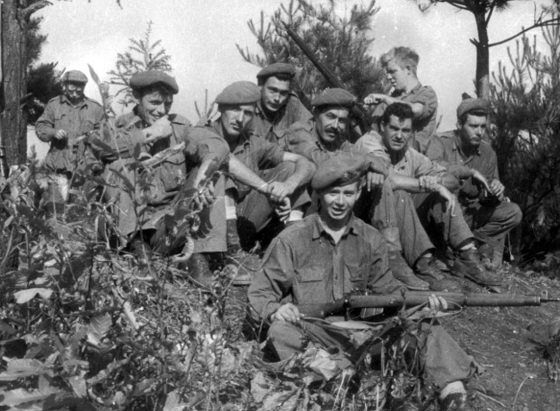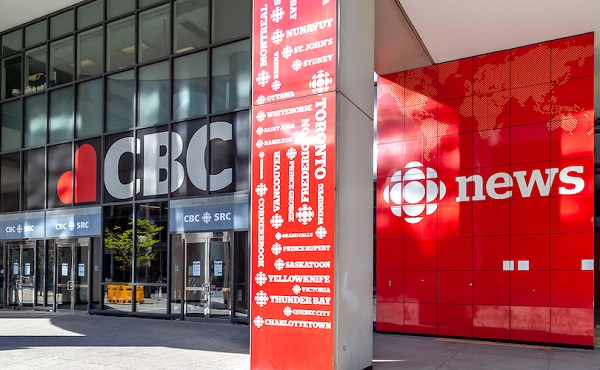Uncategorized
Stan Lee, creator of a galaxy of Marvel superheroes, dies

LOS ANGELES — Stan Lee, the creative dynamo who revolutionized the comic book and helped make billions for Hollywood by introducing human frailties in Marvel superheroes such as Spider-Man, the Fantastic Four and the Incredible Hulk, died Monday. He was 95.
Lee was declared dead at Cedars-Sinai Medical Center in Los Angeles, according to Kirk Schenck, an attorney for Lee’s daughter, J.C. Lee.
As the top writer at Marvel Comics and later as its publisher, Lee was widely considered the architect of the contemporary comic book. He revived the industry in the 1960s by offering the costumes and action craved by younger readers while insisting on sophisticated plots, college-level dialogue, satire, science fiction, even philosophy.
Millions responded to the unlikely mix of realistic fantasy, and many of his characters, including Spider-Man, the Hulk and X-Men went on to become stars of blockbuster films. He won the National Medal of Arts in 2008.
Recent projects Lee helped make possible range from the films “Avengers: Infinity War,” ”Black Panther” and “Guardians of the Galaxy” to such TV series as “Agents of S.H.I.E.L.D” and “Daredevil.” Lee was recognizable to his fans, having had cameos in many Marvel films and TV projects, often delivering his trademark motto, “Excelsior!”
“Captain America” actor Chris Evans mourned the loss on Twitter: “There will never be another Stan Lee. For decades he provided both young and old with adventure, escape, comfort, confidence, inspiration, strength, friendship and joy. He exuded love and kindness and will leave an indelible mark on so, so, so many lives. Excelsior!!”
Lee considered the comic-book medium an art form and he was prolific: By some accounts, he came up with a new comic book every day for 10 years. “I wrote so many I don’t even know. I wrote either hundreds or thousands of them,” he told The Associated Press in 2006.
He hit his stride in the 1960s when he brought the Fantastic Four, the Hulk, Spider-Man, Iron Man and numerous others to life. “It was like there was something in the air. I couldn’t do anything wrong,” he said.
His heroes, meanwhile, were a far cry from virtuous do-gooders such as rival DC Comics’ Superman.
The Fantastic Four fought with each other. Spider-Man was goaded into superhero work by his alter ego, Peter Parker, who suffered from unrequited crushes, money problems and dandruff. The Silver Surfer, an alien doomed to wander Earth’s atmosphere, waxed about the woeful nature of man. The Hulk was marked by self-loathing. Daredevil was blind and Iron Man had a weak heart.
“The beauty of Stan Lee’s characters is that they were characters first and superheroes next,” Jeff Kline, executive producer of the “Men in Black” animated television series, told The Blade of Toledo, Ohio, in 1998.
Some of Lee’s creations became symbols of social change — the inner turmoil of Spider-Man represented ’60s America, for example, while The Black Panther and The Savage She-Hulk mirrored the travails of minorities and women.
“I think of them as fairy tales for grown-ups,” he told The AP in 2006. “We all grew up with giants and ogres and witches. Well, you get a little bit older and you’re too old to read fairy tales. But I don’t think you ever outgrow your love for those kind of things, things that are bigger than life and magical and very imaginative.”
Lee scripted most of Marvel’s superhero comics himself during the ’60s, including the Avengers and the X-Men, two of the most enduring. In 1972, he became Marvel’s publisher and editorial director; four years later, 72 million copies of Spider-Man were sold.
“He’s become our Mickey Mouse,” he once said of the masked, web-crawling crusader.
Lee also published several books, including “The Superhero Women” in 1977 and “How to Draw Comics the Marvel Way” the following year, when he was named publisher of the year by the Periodical and Book Association of America.
CBS turned the Hulk into a successful TV series, with Bill Bixby and Lou Ferrigno portraying the doomed scientist from 1978-82. A Spider-Man series ran briefly in 1978. Both characters were featured in animated TV series as well.
The first big-budget movie based on Lee’s characters, “X-Men,” was a smash in 2000, earning more than $130 million at North American
“Black Panther” actor Winston Duke took to Twitter to pay his respects to Lee: “You gave us characters that continue to stand the test of time and evolve with our consciousness. You taught us that there are no limits to our future as long as we have access to our imagination. Rest in power!”
Stanley Martin Lieber was born Dec. 28, 1922, in New York. He grew up a fan of “Hardy Boys” adventure books and Errol Flynn movies, and got a job at Timely Comics after graduating from high school.
Within a few months, the editor and art director quit, leaving the 17-year-old Lee with creative control over the company, which grew and was renamed Atlas Comics and, finally, Marvel. Lieber changed his name, thinking Lee would be used for “silly little comics” and his real name would be reserved for novels.
His early work largely reflected popular movies — westerns, crime dramas, romance, whatever was the rage at the time. He worked for about 50 cents per page.
After a stint in the Army during World War II, writing for training films, he was back at Marvel to begin a long and admittedly boring run of assembly line comic book production.
Comics in the 1950s were the subject of Senate hearings pushed by the Comics Code Authority, which frowned on gore and characters that questioned authority. Major comic book companies adopted the code as a form of self-regulation to avoid sanctions.
Lee said he was also working for a publisher who considered comics as fare only for children.
“One day I said, ‘This is insane,'” Lee told the Guardian in 1979. “I’m just doing the same type of stories as everybody else. I wasn’t taking pride in my work and I wanted to quit. But my wife said, ‘Look, why don’t you do the kind of comics you want for a change?'”
The result was the first issue of “The Fantastic Four,” in 1960, with the characters, plot and text from Lee and the illustrations by famed Marvel artist Jack Kirby.
The characters were normal people changed into reluctant superheroes through no fault of their own.
Writing in “Origins of Marvel Comics,” Lee described the quartet this way: “The characters would be the kind of characters I could personally relate to; they’d be flesh and blood, they’d have their faults and foibles, they’d be fallible and feisty and — most important of all — inside their colorful, costumed booties they’d still have feet of clay.”
“The Amazing Spider-Man” followed in 1962 and before long, Marvel Comics was an industry behemoth.
Lee knew his work was different, proudly noting that stories were drawn out over several issues not to make money but to better develop characters, situations and themes. He didn’t neglect his villains, either. One, the Moleman, went bad when he was ostracized because of his appearance, Lee wrote, adding it was “almost unheard of in a comic book” to explain why a character was what he was.
Lee’s direct influence faded in the 1970s as he gave up some of his editorial duties at Marvel. But with his trademark white
Lee moved to Los Angeles in 1981 to head Marvel Productions, an animation studio that was later purchased, along with Marvel Comics, for $50 million by New World Entertainment.
As sales of comics declined, Marvel was forced into bankruptcy proceedings that meant it had to void a lifetime contract prohibiting Lee from working for anyone else. Lee later sued Marvel for $10 million, saying the company cheated him out of millions in profits from movies based on his characters.
In 2000, Lee agreed to write stories for DC Comics, reinventing Superman, Batman, Wonder Woman and other signature characters for Marvel’s one-time rival. DC
“With his artistic collaborators at Marvel, Stan co-created the richest imaginary universe a single comics writer has ever built,” he said.
The dapper, friendly comic book genius continued to work into his 90s on numerous projects, including comics, films and DVDs.
In the late 1990s, he looked to capitalize on the Internet craze, offering animated “Webisodes” of comic-like action. Stan Lee Media also sought to reach out to Web-savvy youth through deals with pop artists the Backstreet Boys and Mary J. Blige.
The company went bankrupt, and three men were indicted for allegedly defrauding the business in a check kiting scam. Lee wasn’t implicated.
After that initial failure, Lee formed the successful Pow! Entertainment company to launch animated Internet-based projects.
Lee’s wife and partner in nearly everything, Joan Lee, died on July 6, 2017, leaving a void that made her husband, by then in mental and physical decline, vulnerable to hangers-on who began to surround him. Lawsuits, court fights and an elder abuse investigation all emerged in the fight over who spoke for the elderly Lee.
Lee is survived by his daughter, Joanie, and a younger brother who also worked in comics, Larry Lieber.
___
Associated Press writer John Rogers contributed to this story
Andrew Dalton And Dave Zelio, The Associated Press
Uncategorized
Trump Admin Establishing Council To Make Buildings Beautiful Again


From the Daily Caller News Foundation
By Jason Hopkins
The Trump administration is creating a first-of-its-kind task force aimed at ushering in a new “Golden Age” of beautiful infrastructure across the U.S.
The Department of Transportation (DOT) will announce the establishment of the Beautifying Transportation Infrastructure Council (BTIC) on Thursday, the Daily Caller News Foundation exclusively learned. The BTIC seeks to advise Transportation Secretary Sean Duffy on design and policy ideas for key infrastructure projects, including highways, bridges and transit hubs.
“What happened to our country’s proud tradition of building great, big, beautiful things?” Duffy said in a statement shared with the DCNF. “It’s time the design for America’s latest infrastructure projects reflects our nation’s strength, pride, and promise.”
“We’re engaging the best and brightest minds in architectural design and engineering to make beautiful structures that move you and bring about a new Golden Age of Transportation,” Duffy continued.
Mini scoop – here is the DOT’s rollout of its Beautifying Transportation Infrastructure Council, which will be tasked with making our buildings beautiful again. pic.twitter.com/
9iV2xSxdJM — Jason Hopkins (@jasonhopkinsdc) October 23, 2025
The DOT is encouraging nominations of the country’s best architects, urban planners, artists and others to serve on the council, according to the department. While ensuring that efficiency and safety remain a top priority, the BTIC will provide guidance on projects that “enhance” public areas and develop aesthetic performance metrics.
The new council aligns with an executive order signed by President Donald Trump in August 2025 regarding infrastructure. The “Making Federal Architecture Beautiful Again” order calls for federal public buildings in the country to “respect regional architectural heritage” and aims to prevent federal construction projects from using modernist and brutalist architecture styles, instead returning to a classical style.
“The Founders, in line with great societies before them, attached great importance to Federal civic architecture,” Trump’s order stated. “They wanted America’s public buildings to inspire the American people and encourage civic virtue.”
“President George Washington and Secretary of State Thomas Jefferson consciously modeled the most important buildings in Washington, D.C., on the classical architecture of ancient Athens and Rome,” the order continued. “Because of their proven ability to meet these requirements, classical and traditional architecture are preferred modes of architectural design.”
The DOT invested millions in major infrastructure projects since Trump’s return to the White House. Duffy announced in August a $43 million transformation initiative of the New York Penn Station in New York City and in September unveiledmajor progress in the rehabilitation and modernization of Washington Union Station in Washington, D.C.
The BTIC will comprise up to 11 members who will serve two-year terms, with the chance to be reappointed, according to the DOT. The task force will meet biannually. The deadline for nominations will end Nov. 21.
Uncategorized
New report warns WHO health rules erode Canada’s democracy and Charter rights

The Justice Centre for Constitutional Freedoms has released a new report titled Canada’s Surrender of Sovereignty: New WHO health regulations undermine Canadian democracy and Charter freedoms. Authored by Nigel Hannaford, a veteran journalist and researcher, the report warns that Canada’s acceptance of the World Health Organization’s (WHO) revised International Health Regulations (IHR) represents a serious erosion of national independence and democratic accountability.
The IHR amendments, which took effect on September 19, 2025, authorize the WHO Director-General to declare global “health emergencies” that could require Canada to follow directives from bureaucrats in Geneva, bypassing the House of Commons and the will of Canadian voters.
The WHO regards these regulations as “binding,” despite having no ability or legal authority to impose such regulations. Even so, Canada is opting to accept the regulations as binding.
By accepting the WHO’s revised IHR, the report explains, Canada has relinquished its own control over future health crises and instead has agreed to let the WHO determine when a “pandemic emergency” exists and what Canada must do to respond to it, after which Canada must report back to the WHO.
In fact, under these International Health Regulations, the WHO could demand countries like Canada impose stringent freedom-violating health policies, such as lockdowns, vaccine mandates, or travel restrictions without debate, evidence review, or public accountability, the report explains.
Once the WHO declares a “Pandemic Emergency,” member states are obligated to implement such emergency measures “without delay” for a minimum of three months.
Importantly, following these WHO directives would undermine government accountability as politicians may hide behind international “commitments” to justify their actions as “simply following international rules,” the report warns.
Canada should instead withdraw from the revised IHR, following the example of countries like Germany, Austria, Italy, Czech Republic, and the United States. The report recommends continued international cooperation without surrendering control over domestic health policies.
Constitutional lawyer Allison Pejovic said, “[b]y treating WHO edicts as binding, the federal government has effectively placed Canadian sovereignty on loan to an unelected international body.”
“Such directives, if enforced, would likely violate Canadians’ Charter rights and freedoms,” she added.
Mr. Hannaford agreed, saying, “Canada’s health policies must be made in Canada. No free and democratic nation should outsource its emergency powers to unelected bureaucrats in Geneva.”
The Justice Centre urges Canadians to contact their Members of Parliament and demand they support withdrawing from the revised IHR to restore Canadian sovereignty and reject blind compliance with WHO directives.
-
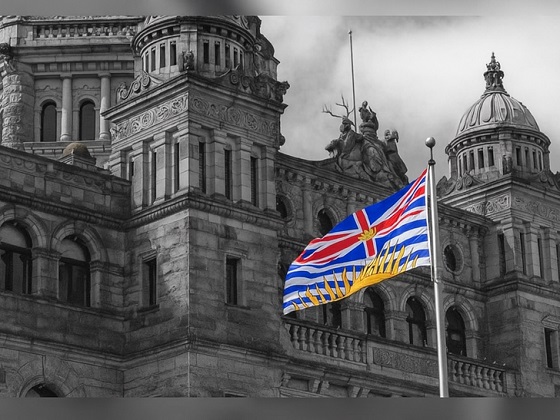
 Frontier Centre for Public Policy2 days ago
Frontier Centre for Public Policy2 days agoRichmond Mayor Warns Property Owners That The Cowichan Case Puts Their Titles At Risk
-

 Business2 days ago
Business2 days agoSluggish homebuilding will have far-reaching effects on Canada’s economy
-
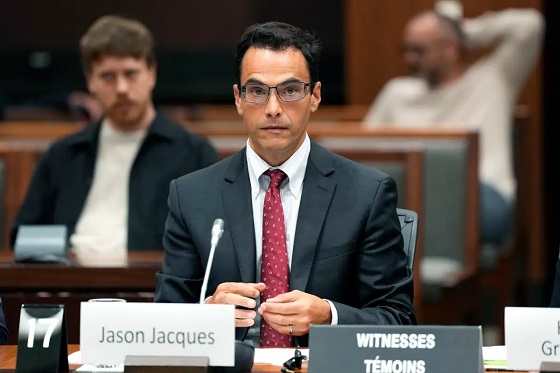
 Business2 days ago
Business2 days agoMark Carney Seeks to Replace Fiscal Watchdog with Loyal Lapdog
-

 Business10 hours ago
Business10 hours agoParliamentary Budget Officer begs Carney to cut back on spending
-

 International1 day ago
International1 day agoUS announces Operation Southern Spear, targeting narco-terrorists
-

 Censorship Industrial Complex1 day ago
Censorship Industrial Complex1 day agoEU’s “Democracy Shield” Centralizes Control Over Online Speech
-
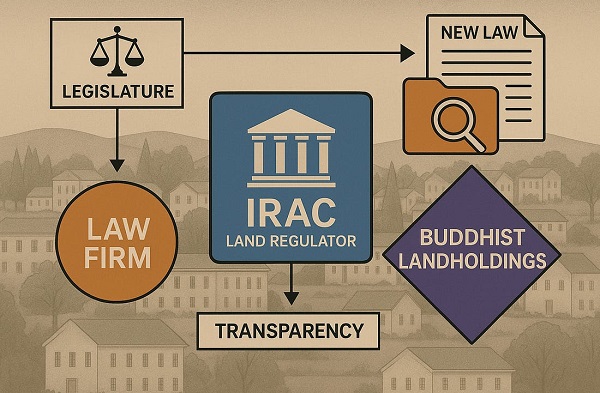
 Business2 days ago
Business2 days agoP.E.I. Moves to Open IRAC Files, Forcing Land Regulator to Publish Reports After The Bureau’s Investigation
-

 COVID-191 day ago
COVID-191 day agoMajor new studies link COVID shots to kidney disease, respiratory problems



